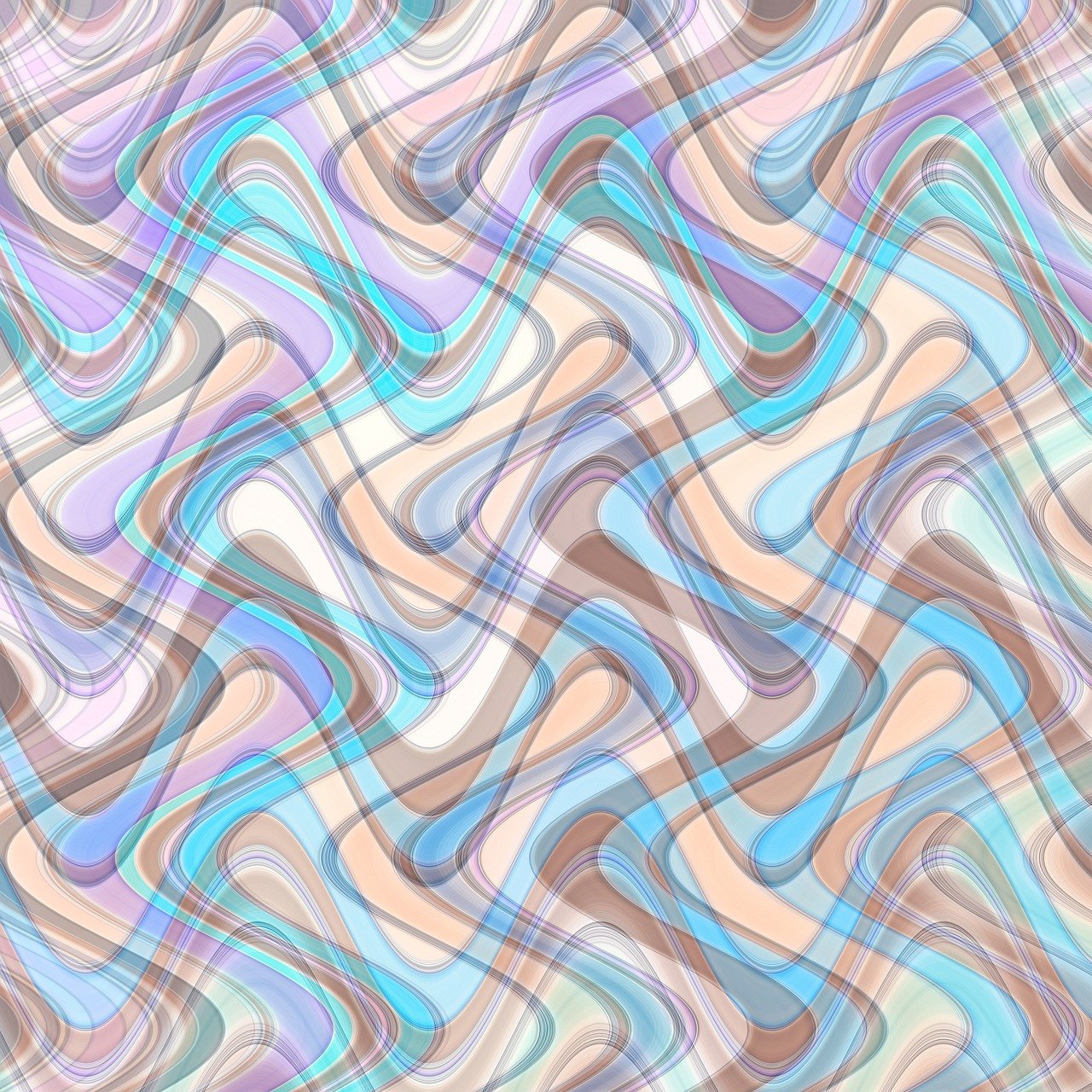How to Use Technical Patterns for Trading Decisions
In the fast-paced world of trading, making the right decisions can often feel like trying to find a needle in a haystack. But what if I told you that there are technical patterns that can help guide your trading strategies? By understanding these patterns, you can navigate the financial markets with more confidence and potentially increase your profitability. This article dives into the fascinating realm of technical patterns, providing you with the knowledge to enhance your trading decisions.
At its core, technical analysis is all about studying price movements and patterns in the financial markets. Think of it as a detective trying to solve a mystery—by analyzing historical data and the psychology behind market movements, traders can forecast future price actions. This method is particularly useful because it allows traders to make informed decisions based on what has happened before, rather than relying solely on gut feelings or news reports. By mastering technical analysis, you can uncover hidden trends and signals that might otherwise go unnoticed.
Now that we have a grasp on what technical analysis is, let’s explore some of the most commonly used technical patterns. These patterns are like road signs on your trading journey, pointing you toward potential market movements and trading opportunities. Here are a few key patterns to keep an eye on:
- Head and Shoulders
- Triangles
- Flags
By recognizing these patterns, you can position yourself to make more educated trades and capitalize on market trends.
The head and shoulders pattern is a classic indicator of trend reversal. Imagine a mountain range: the left shoulder is the first peak, the head is the highest peak, and the right shoulder is the final peak before the market turns. This pattern provides critical signals for traders to either enter or exit positions. Understanding its formation can significantly enhance your trading strategies, giving you a clearer picture of when to act.
On the flip side, the inverse head and shoulders pattern serves as a bullish reversal signal. Picture a valley with a deep dip in the middle; this pattern indicates potential upward price movements after a downtrend. By recognizing this formation, traders can make timely trades that capitalize on the anticipated bullish shift. It’s like catching a wave just as it starts to rise—timing is everything!
To set target prices based on the head and shoulders pattern, traders often calculate the distance from the head to the neckline. This measurement can then be projected upwards or downwards to identify potential profit levels. For instance, if the distance from the head to the neckline is $10, and the breakout occurs above the neckline, a trader might set a target price $10 above the neckline. This method provides a structured approach to setting achievable targets in your trading strategy.
Triangles are another essential pattern in technical analysis, whether they are ascending, descending, or symmetrical. These formations indicate periods of consolidation before a breakout occurs. Recognizing these patterns allows traders to anticipate potential price movements in either direction. Think of triangles as the calm before the storm—prices might be stable for a while, but they’re gearing up for a significant move. By understanding the nuances of triangle patterns, you can prepare yourself for the impending volatility.
Candlestick patterns provide a visual representation of market sentiment and can enhance your technical analysis. These patterns are like the mood rings of the trading world, reflecting the emotions of buyers and sellers. Here are a couple of key candlestick formations that every trader should be aware of:
The doji candlestick signifies indecision in the market. It’s characterized by a small body and long wicks, indicating that buyers and sellers are in a standoff. This often signals a potential reversal, making it crucial for traders to pay attention to its implications. When you spot a doji, it’s like seeing a traffic light turn yellow—be prepared to stop or go, depending on what happens next!
Engulfing patterns are another powerful tool in your trading toolkit. These patterns signal strong reversals and provide clear entry and exit points. When you see a bullish engulfing pattern, it’s like a green light flashing, indicating that it might be time to buy. Recognizing these patterns can significantly impact your trading strategies and overall market performance, helping you make decisions with greater confidence.
Q: What is the best way to learn technical patterns?
A: The best way to learn is through practice. Start by analyzing historical charts and identifying patterns. Use demo accounts to apply your knowledge without risking real money.
Q: How can I combine technical patterns with other analysis methods?
A: Combining technical patterns with fundamental analysis can provide a more comprehensive view of the market. Look at economic indicators, news events, and market sentiment alongside your technical patterns.
Q: Are technical patterns foolproof?
A: No, while technical patterns can provide valuable insights, they are not guaranteed. Always use risk management strategies and be prepared for unexpected market movements.

Understanding Technical Analysis
Technical analysis is like reading the pulse of the financial markets. It's the art and science of studying price movements and patterns to forecast future market behavior. Imagine you're a detective, piecing together clues from past price actions to predict what might happen next. This approach relies heavily on historical data and market psychology, allowing traders to make informed decisions rather than relying on gut feelings or random guesses.
At its core, technical analysis operates on the premise that all information is already reflected in the price. This means that the current price of an asset encapsulates everything known about it—news, earnings, and even traders’ emotions. So, when you analyze price charts, you’re essentially tapping into the collective mindset of all market participants. This can be incredibly powerful, especially when you consider how human psychology often leads to predictable patterns in buying and selling behavior.
To get started with technical analysis, traders typically use various tools and indicators. Some of the most common tools include:
- Price Charts: The foundation of technical analysis, allowing traders to visualize price movements over different time frames.
- Volume Indicators: These indicators help traders understand the strength behind a price movement by analyzing the number of shares or contracts traded.
- Moving Averages: A tool that smooths out price data to identify trends over a specific period.
By using these tools, traders can identify patterns that may suggest future price movements. For example, a trader might notice that a stock has consistently bounced off a certain price level, indicating a strong support level. This insight can lead to strategic buying opportunities.
One of the key aspects of technical analysis is the concept of market psychology. Traders often react to news and events in similar ways, creating patterns in price movements. For instance, during a market downturn, fear can lead to a sell-off, while optimism can drive prices up during a rally. Understanding these emotional responses can give traders a significant edge in predicting market movements.
In summary, technical analysis is a vital tool for traders looking to enhance their trading strategies. By studying price movements and understanding market psychology, traders can make more informed decisions, potentially increasing their profitability. So, whether you’re a seasoned pro or just starting out, mastering technical analysis can be the key to unlocking your trading potential.

Common Technical Patterns
When it comes to trading, understanding is crucial for making informed decisions. These patterns serve as visual cues that can help traders predict future price movements based on historical data. They are like road signs on the trading highway, guiding you towards potential opportunities or warning you of impending dangers. Among the myriad of patterns, a few stand out due to their reliability and frequency of occurrence in the markets. Let's dive into some of the most significant technical patterns that traders should keep an eye on.
The head and shoulders pattern is one of the most recognizable formations in technical analysis. It typically signals a reversal in trend, meaning that it can indicate when a bullish trend is about to turn bearish. Imagine a person with a head and two shoulders; the head is the highest point, flanked by two lower points (the shoulders). This formation can help traders pinpoint optimal entry and exit points, enhancing their overall strategy.
Another important pattern is the triangle. Triangles can be classified into three main types: ascending, descending, and symmetrical. Each type has its own implications for price action. For instance, an ascending triangle often indicates that buyers are gaining strength, suggesting a potential breakout to the upside. On the other hand, a descending triangle might signal that sellers are in control, hinting at a possible downward breakout. Recognizing these triangles can provide traders with a clearer picture of market sentiment and help them anticipate potential price movements.
Lastly, the flag pattern is worth mentioning. Flags are short-term continuation patterns that occur after a strong price movement. They resemble a flag on a pole, where the pole represents the initial price movement, and the flag represents a period of consolidation before the price continues in the same direction. Flags can be either bullish or bearish, depending on the preceding price action. Understanding how to identify and trade these patterns can significantly enhance a trader's ability to capitalize on market trends.
In summary, familiarizing yourself with these common technical patterns—head and shoulders, triangles, and flags—can bolster your trading strategy. By recognizing these formations, you can make more informed decisions, ultimately leading to increased profitability in the financial markets.
What is the importance of technical patterns in trading?
Technical patterns help traders identify potential price movements and reversals, enabling more informed trading decisions.
How can I identify a head and shoulders pattern?
Look for a peak (the head) between two lower peaks (the shoulders). This formation typically indicates a reversal in trend.
What do triangle patterns indicate?
Triangles indicate periods of consolidation before a breakout, with ascending triangles suggesting bullish trends and descending triangles indicating bearish trends.
Are flag patterns reliable?
Yes, flag patterns are considered reliable continuation patterns that can help traders capitalize on the prevailing trend after a period of consolidation.

Head and Shoulders
The head and shoulders pattern is one of the most recognized and reliable indicators in the world of technical analysis. This pattern typically signals a reversal in the trend, making it a crucial tool for traders looking to make informed decisions. Imagine standing on a mountain, where the peak represents the head, and the two shoulders symbolize the highs preceding and following this peak. This visual representation can help you grasp the concept more easily.
To understand this pattern better, let’s break it down into its components. The formation consists of three peaks: the left shoulder, the head, and the right shoulder. The left shoulder forms when the price rises to a peak and then declines. The head is the highest peak, followed by another decline. Finally, the right shoulder forms when the price rises again but doesn’t reach the height of the head before declining once more. This creates a clear pattern that traders look for as a signal to either enter or exit positions.
Recognizing the head and shoulders pattern can significantly enhance your trading strategy. It often appears after an uptrend, indicating that the market sentiment is shifting. When this pattern is confirmed, it can be a strong signal that the price is likely to decline. Traders often use this pattern to set their stop-loss orders and take profit targets, thereby managing their risk effectively.
Moreover, the inverse head and shoulders pattern serves as a bullish reversal signal, offering traders insights into potential upward price movements after a downtrend. This pattern is essentially the opposite of the standard head and shoulders pattern and is equally important for traders looking for buying opportunities.
When it comes to measuring target prices based on the head and shoulders pattern, traders typically calculate the distance from the head to the neckline. The neckline is formed by connecting the lowest points of the two troughs. By projecting this distance upwards or downwards, traders can identify potential profit levels, allowing them to set realistic expectations for their trades.
In summary, the head and shoulders pattern is a powerful tool in a trader's arsenal. By understanding its formation and implications, traders can make more informed decisions, enhancing their trading strategies and potentially increasing profitability. Whether you’re a novice or an experienced trader, mastering this pattern can help you navigate the often turbulent waters of the financial markets.

Inverse Head and Shoulders
The pattern is a powerful indicator that traders often look for when they believe a downtrend is nearing its end. Imagine a mountain range where the middle peak—the head—is taller than the two surrounding peaks—the shoulders. This pattern forms after a significant decline and signals a potential bullish reversal. Recognizing this formation can be the key to timing your trades effectively, allowing you to capitalize on upcoming price movements.
To identify an inverse head and shoulders pattern, traders should look for three key components:
- Left Shoulder: This is the first peak, formed when the price rises after a downtrend but then falls back down.
- Head: The second peak, which is lower than the first, indicates a deeper decline before the price rises again.
- Right Shoulder: The final peak, which should be similar in height to the left shoulder, completes the pattern.
Once this pattern is identified, traders often look for a breakout above the neckline, which is drawn by connecting the highs of the left and right shoulders. A breakout above this neckline can serve as a strong buy signal, suggesting that the price may continue to rise. The potential for profit becomes even more enticing when you consider how to measure the target price.
To calculate the target price after identifying the inverse head and shoulders pattern, traders typically follow these steps:
| Step | Description |
|---|---|
| 1 | Measure the distance from the lowest point of the head to the neckline. |
| 2 | Project this distance upwards from the breakout point above the neckline. |
| 3 | This projection gives you a target price that can help in setting profit-taking levels. |
Understanding the inverse head and shoulders pattern not only helps you identify potential buying opportunities but also enhances your overall trading strategy. Just like a lighthouse guiding ships to safety, recognizing this pattern can illuminate your path in the often turbulent waters of trading. So, keep your eyes peeled for this formation, and you may just find yourself riding the waves of profitability!
- What is the significance of the inverse head and shoulders pattern? This pattern indicates a potential reversal from a downtrend to an uptrend, signaling a bullish market sentiment.
- How reliable is the inverse head and shoulders pattern? While it is a strong indicator, no pattern is foolproof. Combining it with other technical analysis tools can increase your chances of success.
- Can the inverse head and shoulders pattern appear in all timeframes? Yes, this pattern can be observed on various timeframes, making it versatile for different trading strategies.

Measuring Target Price
When it comes to trading, knowing how to measure your target price based on the head and shoulders pattern can be a game changer. This pattern not only helps you identify potential reversals but also allows you to set realistic profit targets. Imagine you're standing at the edge of a beautiful cliff, ready to jump into the water below. You need to know how deep that water is to ensure a safe landing. Similarly, measuring your target price is about ensuring you land safely in your trading journey.
To measure the target price effectively, traders typically follow a straightforward method. First, you need to identify the head and the neckline of the pattern. The distance from the head to the neckline is crucial. Once you pinpoint this distance, you can project it from the neckline either upwards or downwards, depending on whether you're anticipating a bullish or bearish move. This projection gives you a clear target price to aim for.
Here’s a simple breakdown of the steps involved:
- Identify the Head and Shoulders: Look for the three peaks in the pattern, with the middle peak being the highest (the head) and the two outer peaks being the shoulders.
- Determine the Neckline: This is the support level formed by connecting the lows of the two shoulders.
- Measure the Distance: Calculate the vertical distance from the head to the neckline.
- Project the Target Price: If the pattern indicates a bearish reversal, subtract the measured distance from the neckline. For a bullish reversal, add the distance to the neckline.
For example, let’s say the head of the pattern is at $100 and the neckline is at $80. The distance is $20. If you’re expecting a bearish reversal, your target price would be $80 - $20 $60. Conversely, if you’re looking at an inverse head and shoulders, you would add the distance, setting a target price of $80 + $20 $100.
It's essential to remember that while this method provides a target price, market conditions can change rapidly. Therefore, always be prepared to adjust your strategy based on real-time data and other indicators. Trading is not just about following patterns; it’s about being adaptable and responsive to the ever-changing market landscape.
In conclusion, measuring target prices using the head and shoulders pattern can significantly enhance your trading decisions. By understanding the mechanics behind this process, you can set more informed targets, thereby increasing your chances of achieving profitable trades.
Q: What is the head and shoulders pattern?
A: The head and shoulders pattern is a reversal pattern that typically signals a change in trend direction. It consists of three peaks: two shoulders and a head, indicating potential price movements.
Q: How do I identify the neckline in the head and shoulders pattern?
A: The neckline is formed by connecting the lows of the two shoulders. It acts as a support level, and a break below it often confirms the pattern's validity.
Q: Can head and shoulders patterns fail?
A: Yes, like any technical pattern, head and shoulders patterns can fail. It's crucial to use additional indicators and market analysis to confirm signals before making trading decisions.

Triangles
Triangles are fascinating formations that emerge during periods of market consolidation, acting like a pressure cooker ready to explode with volatility. They can take on three distinct shapes: ascending, descending, and symmetrical. Each type carries its own implications for traders, signaling potential breakouts in either direction. Understanding these patterns is crucial because they can help you anticipate price movements and make informed trading decisions.
When you spot a triangle pattern, it's essential to analyze the market context. For instance, an ascending triangle typically forms in a bullish market, characterized by higher lows and a horizontal resistance line. This pattern suggests that buyers are gaining strength, and a breakout above the resistance level is likely. On the other hand, a descending triangle appears in a bearish market, with lower highs and a horizontal support line, indicating that sellers are in control, potentially leading to a breakdown below support.
The symmetrical triangle is a bit of a wild card. It can form in both bullish and bearish markets, characterized by converging trendlines that create a sense of uncertainty. Traders often find themselves on the edge of their seats, waiting for a decisive breakout. The key here is to be prepared for either direction, as the breakout can happen either upwards or downwards with equal probability. This unpredictability is what makes triangles both exciting and challenging.
To measure the potential breakout target from a triangle pattern, traders often use a simple technique: measure the height of the triangle at its widest point and project that distance from the breakout point. For example, if the height of the triangle is $10, and the price breaks out above the resistance level, you can project a potential target of $10 above the breakout point. This method provides a tangible goal to aim for, enhancing your trading strategy.
In summary, triangles are not just shapes; they are powerful indicators of market sentiment and potential price movements. By recognizing these patterns and understanding their implications, you can position yourself to capitalize on market opportunities. So, the next time you see a triangle forming on your charts, remember: it’s not just a pattern; it’s a signal that could lead to significant profits.
- What is a triangle pattern in trading? A triangle pattern is a chart formation that occurs when the price action converges, creating a shape that resembles a triangle. It indicates periods of consolidation before a potential breakout.
- How can I identify a triangle pattern? Look for converging trendlines on your charts. Ascending triangles have higher lows and horizontal resistance, while descending triangles have lower highs and horizontal support. Symmetrical triangles have both converging lines.
- What does a breakout from a triangle pattern mean? A breakout indicates a significant price movement that can lead to a new trend. A breakout above an ascending triangle suggests bullish sentiment, while a breakdown below a descending triangle indicates bearish sentiment.
- How do I set price targets after a triangle breakout? Measure the height of the triangle at its widest point and project that distance from the breakout point to determine potential price targets.

Using Candlestick Patterns
Candlestick patterns are like the heartbeat of the financial markets. They provide traders with a visual representation of price movements and market sentiment, offering insights that can be crucial for making informed trading decisions. Imagine standing at a crossroads, where each candlestick is a signpost guiding you toward potential opportunities or pitfalls. By learning to read these patterns, you can enhance your technical analysis and improve your trading strategies.
One of the most significant advantages of using candlestick patterns is their ability to convey market psychology. Each candle tells a story about the battle between buyers and sellers. For instance, a long green candlestick indicates strong buying pressure, while a long red candlestick suggests selling pressure. By interpreting these signals, traders can gauge market sentiment and anticipate future price movements.
Among the various candlestick patterns, a few stand out due to their reliability and effectiveness. Here are some key formations that every trader should keep an eye on:
- Doji Candlestick: The doji is characterized by its small body and long wicks, indicating indecision in the market. It often appears at the top or bottom of trends, serving as a potential reversal signal. When you spot a doji, it's time to pay attention!
- Engulfing Patterns: These patterns occur when a small candlestick is followed by a larger one that completely engulfs it. A bullish engulfing pattern can signal a strong upward movement, while a bearish engulfing pattern may indicate a downward trend. Recognizing these patterns can provide clear entry and exit points for traders.
To illustrate the power of candlestick patterns, let's take a look at a simple table that summarizes some common formations and their implications:
| Candlestick Pattern | Implication |
|---|---|
| Doji | Indecision; potential reversal |
| Hammer | Bullish reversal after a downtrend |
| Engulfing | Strong reversal signal |
| Morning Star | Bullish reversal pattern |
| Evening Star | Bearish reversal pattern |
By incorporating these candlestick patterns into your trading arsenal, you can gain an edge in the markets. However, it's essential to remember that no single pattern is foolproof. It's always wise to use candlestick analysis in conjunction with other technical indicators and patterns to confirm your trading decisions.
In conclusion, mastering candlestick patterns can significantly enhance your trading strategy. They not only provide valuable insights into market sentiment but also help you identify potential entry and exit points. So, the next time you analyze price charts, take a moment to observe the candlestick formations. They might just reveal the clues you need to make your next big trade!
Q: What are candlestick patterns?
A: Candlestick patterns are formations created by the price movements of an asset, displayed in a graphical format. They help traders interpret market sentiment and make decisions based on historical price behavior.
Q: How reliable are candlestick patterns?
A: While candlestick patterns can provide valuable insights, they are not infallible. It's important to use them alongside other technical indicators and analysis methods to increase the likelihood of successful trades.
Q: Can I trade based solely on candlestick patterns?
A: It's not advisable to rely solely on candlestick patterns for trading decisions. Combining them with other forms of analysis, such as trend lines and volume indicators, can lead to more informed and successful trading strategies.

Doji Candlestick
The is a fascinating formation that often signifies a moment of indecision in the market. Picture this: you’re at a crossroads, unsure whether to go left or right. That’s exactly what the doji represents for traders. It occurs when the opening and closing prices of a security are virtually the same, creating a candlestick with a small body and long wicks. This unique shape indicates that buyers and sellers are in a tug-of-war, leading to uncertainty about the next price movement.
Recognizing a doji is crucial because it can often signal a potential reversal in the market trend. Imagine you’re watching a suspenseful movie; the moment the doji appears, you know something significant is about to happen. If a doji forms after an uptrend, it could suggest that the bulls are losing their grip, and a downward reversal might be on the horizon. Conversely, if it appears after a downtrend, it may indicate that the bears are losing control, hinting at a possible upward reversal.
There are several types of doji formations, each with its own implications:
- Standard Doji: This is the classic form, where the open and close are nearly the same.
- Long-Legged Doji: This type has long wicks on both sides, indicating significant volatility and uncertainty.
- Gravestone Doji: This occurs when the open and close are at the low of the day, suggesting potential bearish reversal.
- Dragonfly Doji: This is the opposite of the gravestone, indicating potential bullish reversal when it appears at the bottom of a downtrend.
When interpreting doji candlesticks, context is key. Traders should always consider the overall trend and other technical indicators before making decisions based solely on the doji. For instance, if a doji appears at a significant support or resistance level, it could reinforce the likelihood of a reversal. Additionally, volume plays a critical role; a doji accompanied by high trading volume may indicate a stronger signal than one with low volume.
In summary, the doji candlestick is a powerful tool in a trader's arsenal. It encapsulates market sentiment and can provide essential insights into potential price movements. By understanding its formation and implications, traders can make more informed decisions, ultimately enhancing their trading strategies.
Q1: What does a doji candlestick indicate?
A doji candlestick indicates indecision in the market, often signaling a potential reversal in the current trend.
Q2: How do I trade based on a doji candlestick?
To trade based on a doji, consider the context in which it appears, such as the preceding trend and nearby support/resistance levels. Look for confirmation from other indicators before entering a trade.
Q3: Are there different types of doji candlesticks?
Yes, there are several types of doji candlesticks, including the standard doji, long-legged doji, gravestone doji, and dragonfly doji, each with unique implications for market direction.

Engulfing Patterns
Engulfing patterns are powerful candlestick formations that can signal potential reversals in the market. They occur when a smaller candle is completely engulfed by a larger candle, indicating a shift in momentum. This pattern can be a trader's best friend, as it often suggests that the prevailing trend is losing strength, and a new trend may be about to emerge. Understanding how to identify and interpret engulfing patterns can significantly enhance your trading strategy and decision-making process.
There are two main types of engulfing patterns: the bullish engulfing pattern and the bearish engulfing pattern. The bullish engulfing pattern occurs after a downtrend and signifies a potential reversal to the upside. It consists of a small bearish candle followed by a larger bullish candle that completely engulfs the previous candle's body. This indicates that buyers have taken control, and traders should consider entering long positions.
On the other hand, the bearish engulfing pattern appears after an uptrend and suggests a potential reversal to the downside. It consists of a small bullish candle followed by a larger bearish candle that engulfs the previous candle's body. This pattern signals that sellers are gaining strength, and it may be wise for traders to consider short positions. The ability to recognize these patterns can provide traders with critical entry and exit points.
To effectively utilize engulfing patterns in trading, it’s essential to pay attention to the context in which they form. For example, consider the following factors:
- Trend Direction: Ensure that the engulfing pattern aligns with the overall market trend. A bullish engulfing pattern is more reliable in an established downtrend, while a bearish engulfing pattern is more trustworthy in an uptrend.
- Volume Confirmation: Look for increased trading volume during the formation of the engulfing pattern. Higher volume can add credibility to the signal, indicating stronger conviction among traders.
- Support and Resistance Levels: Engulfing patterns that form near significant support or resistance levels can provide additional confirmation of a potential reversal.
To illustrate the significance of engulfing patterns, let’s take a closer look at a hypothetical example:
| Candle Type | Candle Color | Market Sentiment |
|---|---|---|
| Small Bearish Candle | Red | Indicates selling pressure |
| Large Bullish Candle | Green | Indicates buying pressure |
In this example, the small bearish candle suggests that sellers are in control, but the subsequent large bullish candle completely engulfs it, indicating a shift in sentiment to the buyers. Traders observing this pattern may decide to enter a long position, anticipating that the price will continue to rise.
In conclusion, engulfing patterns are vital tools for traders looking to identify potential reversals in the market. By mastering the art of recognizing these patterns and understanding their implications, you can make more informed trading decisions that align with market movements. Remember, the key is to combine engulfing patterns with other indicators and market analysis for a well-rounded trading strategy.
Q: How reliable are engulfing patterns?
A: Engulfing patterns can be quite reliable, especially when confirmed by other indicators and market context. However, like any trading signal, they are not foolproof and should be used in conjunction with other analysis methods.
Q: Can engulfing patterns occur in any time frame?
A: Yes, engulfing patterns can form in any time frame, from minutes to daily charts. The significance of the pattern often increases with the time frame, as longer time frames tend to filter out noise.
Q: What should I do if I see an engulfing pattern?
A: If you spot an engulfing pattern, consider the overall market trend, volume, and nearby support or resistance levels. These factors will help you determine whether to enter a trade and what risk management strategies to apply.
Frequently Asked Questions
- What is technical analysis?
Technical analysis is the practice of evaluating price movements and patterns in financial markets. By analyzing historical data and market psychology, traders can forecast future price trends and make informed trading decisions.
- How can I identify a head and shoulders pattern?
The head and shoulders pattern consists of three peaks: a higher peak (the head) between two lower peaks (the shoulders). This pattern indicates a potential reversal in trend, signaling traders when to enter or exit their positions.
- What does an inverse head and shoulders pattern signify?
An inverse head and shoulders pattern is a bullish reversal signal that suggests a potential upward price movement after a downtrend. Recognizing this pattern can help traders capitalize on timely buying opportunities.
- How do I measure target prices using the head and shoulders pattern?
To set target prices, measure the distance from the head to the neckline of the pattern. This distance can then be projected upwards or downwards from the neckline to identify potential profit levels.
- What are triangle patterns in trading?
Triangle patterns, including ascending, descending, and symmetrical triangles, represent periods of consolidation before a breakout. Identifying these patterns helps traders anticipate potential price movements in either direction.
- What is a doji candlestick?
A doji candlestick signifies indecision in the market, often indicating a potential reversal. Understanding the implications of a doji can guide traders in making informed decisions during uncertain market conditions.
- What are engulfing patterns and why are they important?
Engulfing patterns are candlestick formations that signal strong reversals in the market. Recognizing these patterns provides traders with clear entry and exit points, significantly impacting their trading strategies and overall market performance.


















